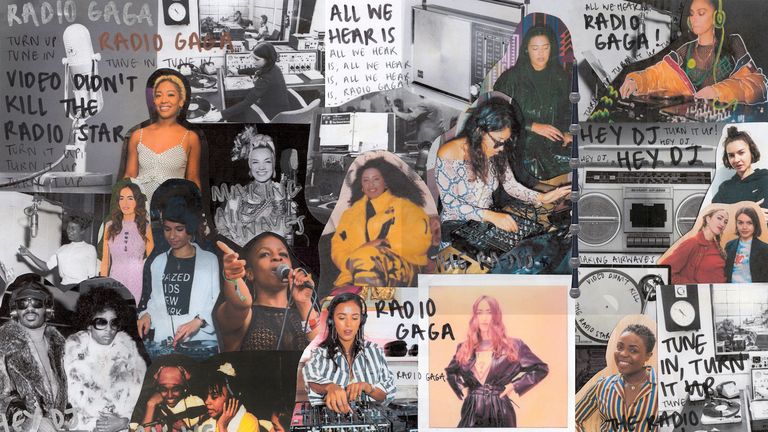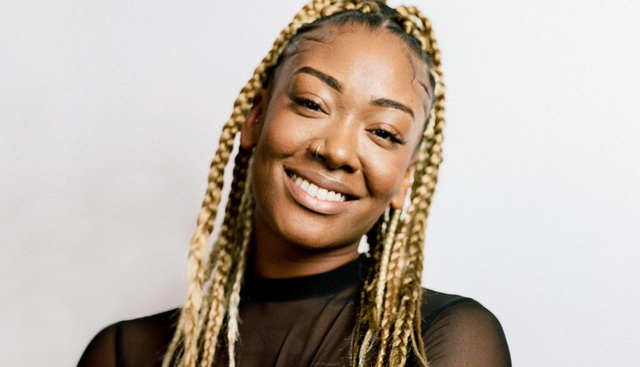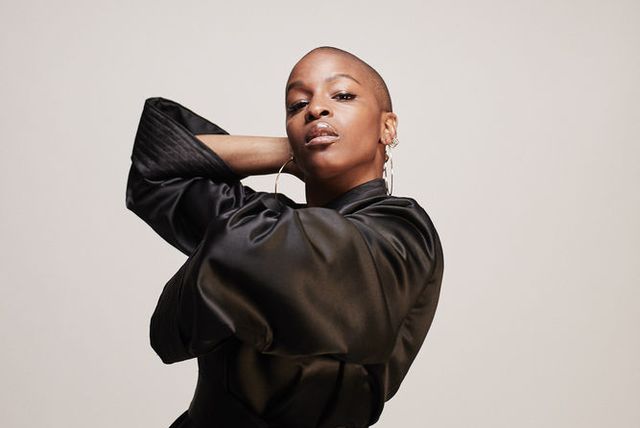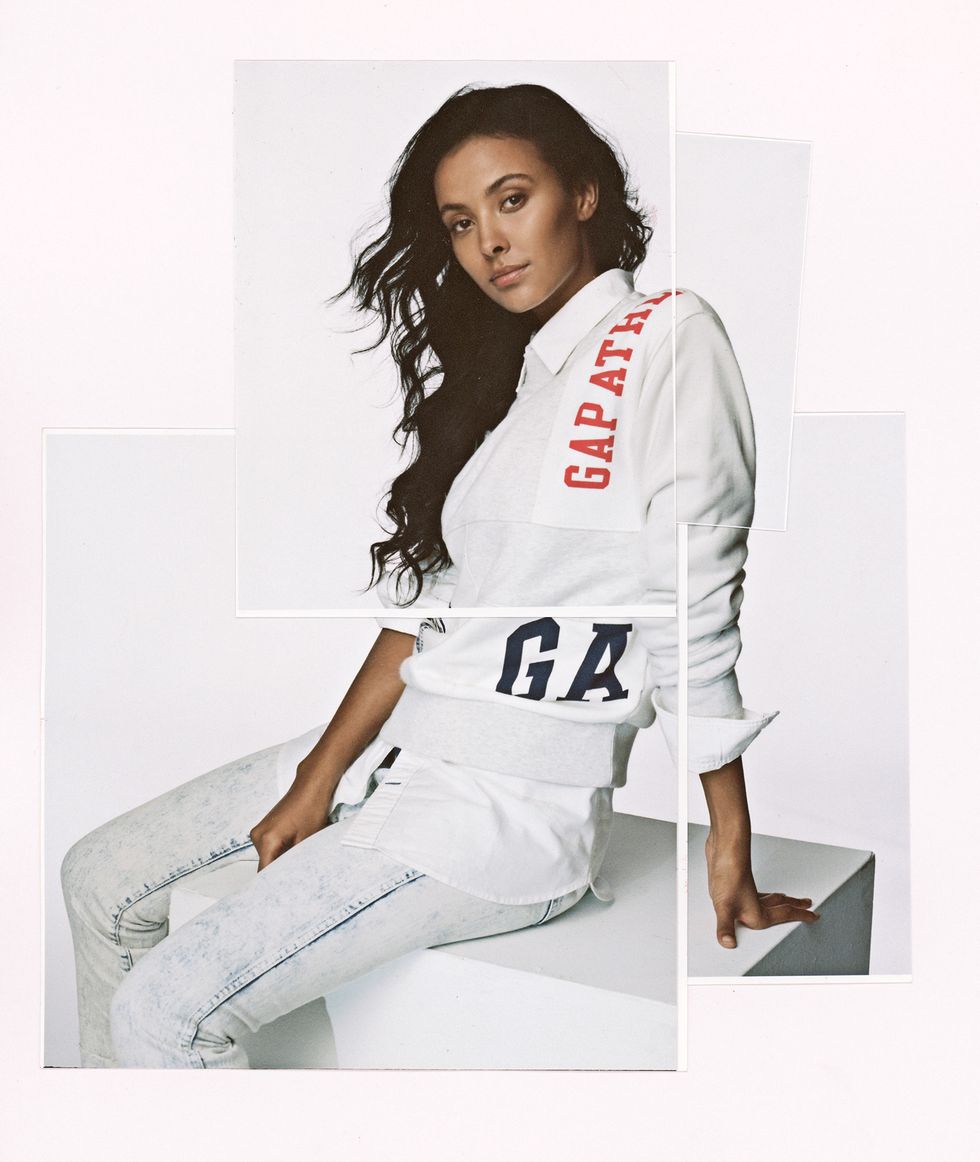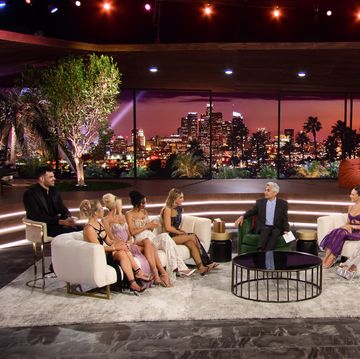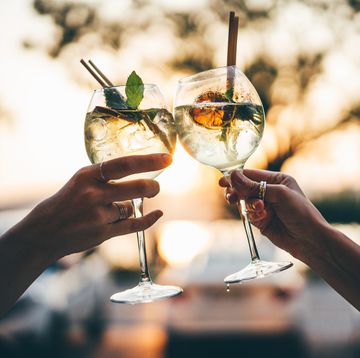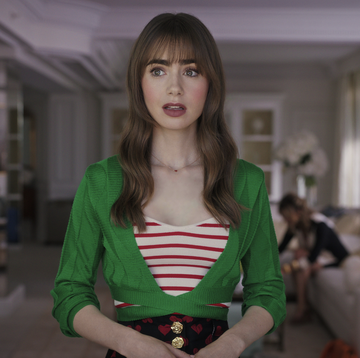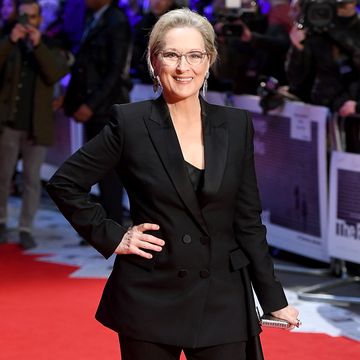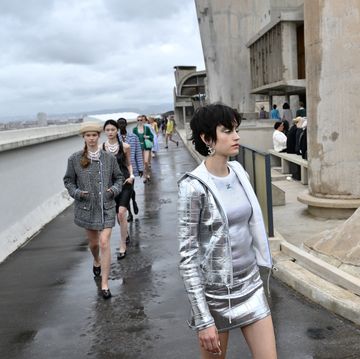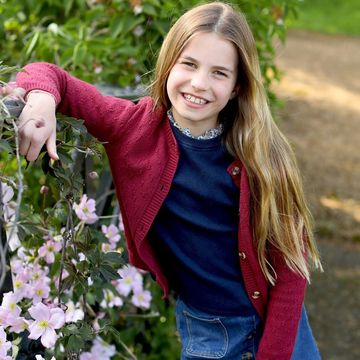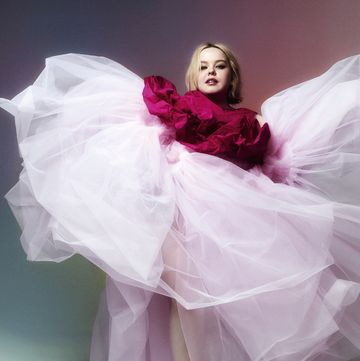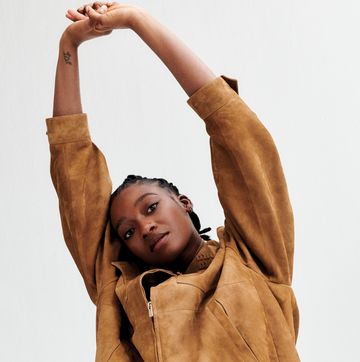‘I was listening to Dolly Parton the other day, because I love a bit of country and western,’ Kelechi Okafor declares into the mic.
‘Jolene, I’m begging of you please...’ she croons, before pausing in faux shock: ‘Imagine begging someone not to take your man?! Jolene, baby girl, come and TAKE HIM – there are plenty more men.’
After erupting into laughter, Kelechi, 32, launches into a hilarious tirade.
‘Jolene isn’t even after your man, she’s minding her own business! It’s the men who are obsessed with her,’ she says, effortlessly segueing into the ‘wasteman chronicles’: a section of her show dedicated to listeners’ dating woes.
Welcome to The Catch Up, a weekly afternoon radio show on digital station Foundation FM. With her humour, eclectic music taste and direct manner, actor and director Kelechi is part of a revolution happening on our airwaves.
Thanks to the rise of on-demand TV and music-streaming services, radio’s place in the world hasn’t always seemed certain.
Back in 2008, GCap Media (home to commercial stations including Capital and Heart) was in the midst of closing down several stations, including Xfm. Fru Hazlitt, its then chief executive, said digital radio – though still in its infancy – was ‘not economically viable’.
Yet despite these warnings, audiences are now tuning in at record levels – just not always to mainstream channels.
According to RAJAR (the official body in charge of measuring radio audiences in the UK), 48.6 million adults listen to a billion-plus hours of radio each week, marking a new UK record**.
In 2017, 170 new local and national digital stations launched in the UK†, and while indie stations don’t tend to share listening figures, it’s clear they’re on the rise.
The presenters aren’t household names but passionate music fans, and the stations are as unpredictable as they are exciting. Just as independent zines have taken off, shows like Kelechi’s are fuelling a new golden age: DIY in its approach, and more accessible than ever.
As it turns out, the digitisation of radio – what Hazlitt once considered the beginning of the end – was in fact the While proving risky for established radio channels, the accessibility of digital has made it easier and cheaper for new stations to thrive.
Whereas FM stations are costly to run and need to be licensed and approved by Ofcom, launching an online radio station is relatively straightforward: shows can be broadcast from anywhere with a decent WiFi connection, and if the presenter isn’t playing commercial music, no licence is required.
It’s also proving to be convenient for listeners – according to RAJAR figures, 63 per cent of people over the age of 15 in the UK listen to digital radio every week.
‘Being an internet station allows us to take radio that step further – that’s what excites us,’ says Frankie Wells, 26, team assistant at Radio 1Xtra and one of the founders of Foundation FM.
‘People are paying much more attention to underground and community stations than ever before.’
Frankie launched the station last February, along with friends Becky Richardson, a 29-year-old artist manager, and radio producer Ami Bennett, 32. It operates out of Peckham Levels, a former multi- storey car park in south London that is now used as a space for local artists and independent businesses.
Free from the restraints of major broadcasting corporations, these new online start-ups aren’t afraid to take risks and champion diverse offerings, in turn attracting new listeners.
‘We set up the station because we felt like there weren’t enough opportunities for women [in radio] at entry level,’ says Ami.
‘We want to be a foundation for the next generation of amazing female broadcasters.’
Instead of approaching industry insiders, the team put together a diverse line-up of hosts for a roster of shows that cover everything from mental health to underground music scenes. Presenters include podcasters Sistren, music publicist Joss Meek and, of course, Kelechi. ‘It’s not just presenters and DJs,’ says Ami. ‘We looked to artists, collectives, performers – anyone who promotes a positive message that aligns with our own.’
One of those collectives was Women in Fashion, an organisation founded by photographer Daisy Walker, 28, that aims to spark positive change in the fashion industry by harnessing the power of the collective.
‘WIF is all about conversation, working things out through talking and using your voice for change – so radio is the perfect medium,’ says journalist Bella Gladman, also 28, who has attended Women in Fashion meetings since 2O17 and now co-hosts a fortnightly slot on Foundation FM with Daisy.
Together, they interview industry experts and discuss everything from body diversity to casting and social media, while playing a perfect playlist of breakthrough artists and R&B throwbacks.
Foundation FM isn’t alone in offering more diverse talent than traditional stations.
Other indie outlets breaking new ground include Reprezent – a youth-led organisation that broadcasts out of a shipping container in Brixton, set up by former teacher Shane Carey.
There’s also Limbo Live, a late-night station in Manchester celebrating the city’s underground music scene, that provides a platform for amateur artists and DJs. It was the brainchild of Jamie McDougall, who set up the station while he studied illustration at Manchester School of Art.
INDEPENDENT SHOWS TO KNOW
THE CATCH UP WITH KELECHI: FOUNDATION FM
Hosted by Kelechi Okafor from London’s Peckham Levels
NABIHAH IQBAL: NTS
Tune in to Nabihah’s show for music from artists around the globe
GAL-DEM: REPREZENT
The collective broadcasts from a Brixton studio every other Sunday
As with the resurgence of zines, audiences are tapping in to independent radio to discover emerging talent. East London-based station NTS was a trailblazer in this respect – it was set up by Femi Adeyemi, who, aged 28, felt disillusioned by mainstream radio. In 2O11, he quit his job managing an online fashion brand to create an alternative.
Since its launch, NTS has grown into a global proposition with more than one million listeners a month, almost 15O,OOO Instagram followers and a reputation for expert DJs with idiosyncratic tastes.
A show on UK grime might sit back-to-back with an experimental hour dedicated to underwater field recordings from the British Library archive (yes, really), and before each DJ begins their set, they must have a picture taken in the studio, which is plastered with stickers in homage to those who have graced its airwaves.
By hosting events and working with brands that align with its values, NTS has managed to eschew traditional advertising – a model that’s allowed the team to build a loyal following of artists, DJs and fans alike.
‘Online radio provides a counter to the saturation of content on the internet,’ argues musician and former University of Cambridge student Nabihah Iqbal, 30. She hosts a regular show on NTS, in which she embraces her eclectic, global musical taste, educating listeners on subcultures from around the world.
‘Music is amazing because it’s completely limitless; there are constantly so many new artists and releases. Amidst that chaos, it’s nice to tune in to a radio show and hear music that’s being curated for you.’
Fellow NTS host Martha Pazienti Caidan, 24, agrees that ‘radio is just so intimate’ – her self-titled show focuses on new electronic music. By music fans, for music fans: the appeal of these shows lies in their authenticity. ‘With the internet, the beauty is that anyone can do it from anywhere – you just need a computer and a microphone,’ explains Nabihah.
Of course, in the same way new stations can thrive relatively quickly, radio communities that don’t foster values of fairness and inclusivity can implode in an instant.
At the beginning of 2018, Radar Radio was one of the UK’s most promising digital stations, but after resident DJs from the club night and collective Pxssy Palace (who had a show on the station) released a statement accusing it of ‘tokenis[ing] women, feminism, queer and trans culture, and people of colour for capitalist purposes, while making little to no effort to practise intersectionality within their own organisation’, word of the allegations spread rapidly online, with others quickly surfacing.
Less than a month after the initial post, the station had stopped broadcasting. There are platforms such as Foundation FM that are committed to making radio a ‘positive, supportive and safe space for people to experiment, and hone their skills’ – and in this post-Me Too climate, such a zero-tolerance attitude towards discrimination and misogyny has seen them thrive.
THE WOMEN of ESTABLISHED RADIO
MAYA JAMA: BBC RADIO 1
Big hits, Noughties classics and new music
SIAN ANDERSON: RADIO 1XTRA
The latest in hip-hop, grime and rap
JULIE ADENUGA: BEATS 1
Interviews and music from the grime connoisseur
The impact these DIY stations are having is making established brands sit up and take note.
Apple, which already has a major streaming service, launched ‘the first live 24-7 global radio station’ Beats 1 in 2015, which is broadcast to over 100 countries. ‘I don’t really believe in orthodox ways of doing things,’ says one of its hosts, Julie Adenuga, 30, as we chat in the green room of the station’s London studio, based in King’s Cross.
‘In radio, I get to retain my personality. It’s [no longer] about putting on a telephone voice – radio feels human. It’s about being part of a conversation.’ Alongside stars such as Drake, Nicki Minaj and Frank Ocean, who all routinely host their own shows, Julie is one of the station’s main weekday anchors (along with Zane Lowe in the LA studio and Ebro Darden in New York).
Her eclectic slot reflects a modern, millennial music taste: it’s not uncommon to hear her play Taylor Swift alongside a new underground MC. ‘I just like songs that spark joy, that’s my vibe,’ she says.
Even the BBC has shaken up its offerings: last year, Maya Jama officially joined Radio 1 to host two shows, and Tiffany Calver (a writer and DJ who began her presenting career at Radar Radio) recently became the first woman to present the BBC Radio 1 Rap Show.
‘I do think there are still too many men speaking for us,’ says Sian Anderson, who started out at former pirate radio station Rinse FM, known for its grime expertise, and now hosts a daily show on Radio 1Xtra. ‘But I think the industry is working at making [radio] more inclusive. It takes time, but we’ll get there.’
Julie agrees that the industry is on an upward trajectory: ‘There are conversations now when something is happening, “Do we have enough women? Do we have enough diversity?” Sometimes it’s annoying to have those conversations when you want to be able to show up to work and enjoy your day, but we have to be a part of the generation that makes sure change is happening. I’m not worried.’
With larger institutions trying to emulate the success of independent channels, plus a proliferation of new stations, we’re entering an exciting new era. As another generation of talent pick up the microphone, playing the music they want to hear and speaking their minds, it’s clear that the future of radio has never sounded so good.
This article appears in the April 2019 edition of ELLE UK. Subscribe here to make sure you never miss an issue.
